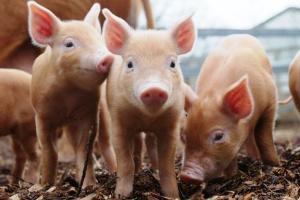Research: Improve performance in ZEA fed pigs

Previous research has shown that dietary Zearalenone (ZEA) may reduce nutrient digestibility and increase oxidative stress in pigs; and that the use of Calibrin-Z (CAZ), thermally processed clay, can prevent the negative effects of ZEA. However, it is unknown what CAZ will do if pigs are already intoxicated with ZEA. Therefore, the objective of the present study was designed to answer: 1) can ZEA and CAZ effects be reproduced in our lab, and 2) can CAZ improve performance in pigs previously fed ZEA.
Material and Methods
Initially 144 weaned female pigs were randomly allotted to 8 treatments according to their BW (3 reps, 6 pigs/pen). Pigs were fed a corn-SBM based diet for a 7-d period of adjustment before starting their treatment diets, which were fed for 28 d. Treatments were 1) control; 2) control + 0.2% CAZ; 3) control + 200 ppb ZEA; 4) control + 200 ppb ZEA + 0.05% CAZ; 5) control + 400 ppb ZEA; 6) control + 400 ppb ZEA + 0.10% CAZ; 7) control + 800 ppb ZEA; 8) control + 800 ppb ZEA + 0.2% CAZ. At the end of the feeding period pigs from the treatments fed diets that contained 0, 200, 400, and 800 ppb ZEA only (without CAZ supplementation) were selected and randomly divided into 2 groups. Pigs were continuously fed non-contaminated control diets or that diet with 0.2% CAZ for 18 d to determine their recovery rate.
Results and Discussion
In the first part of the experiment pigs fed 800 ppb ZEA had worse ADG and FE (P<0.05) compared to the pigs fed the 0 ppb ZEA diet. Addition of 0.2% Calibrin-Z to the 800 ppb ZEA diet improved (P<0.05) FE. The vulva size of pigs increased linearly (P<0.05) as dietary ZEA increased. Addition of CAZ reduced the (P<0.05) average vulva size in the 400 and 800 ppb ZEA treatments but not in the 0 and 200 ppb ZEA treatments. Dry matter, CP, and GE digestibility decreased (P<0.05) as dietary ZEA increased and all were improved by CAZ supplementation with the improvement being independent of dietary ZEA dosage. Serum liver enzymes increased linearly as dietary ZEA increased on d-14 but not on d-28. Serum MDA increased and TSD decreased as dietary ZEA dosage increased (P<0.05), and Calibrin-Z supplementation reversed the effects that ZEA had on serum MDA and TSD activity. In the second part of the experiment, the recovery stage, 0.2% CAZ increased (P<0.05) ADG in pigs pre-fed 200, 400, or 800 ppb ZEA diets as compared to the pigs pre-fed the same ZEA diets followed by the control diet without CAZ. However, improved FE (P<0.05) from CAZ feeding was observed in pigs pre-fed the 200 and 800 ppb treatments, only. Pigs fed 0.2% CAZ reduced (P<0.05) average vulva size through-out the study compared to pigs fed the control diet regardless of pre-fed ZEA dosage. The rate of vulva size reduction was significantly improved in pigs fed the diet with CAZ. Serum MDA was reduced (P<0.05) in pigs fed CAZ supplementation on d-18 but not different on d-9; TSD increased (P<0.05) in those pigs fed CAZ on d-9 but this was not different on d-18. In conclusion, the results showed that ZEA has negative effects on pig production other than the well-know estrogenic effects, and that these effects can continue even after ZEA contaminated feed is removed.
Conclusion
The CAZ preventative effect can be reproduced between labs and CAZ may be used to accelerate the recovery of pigs previously intoxicated with ZEA.
Authors: Author : Wang, P, Kim, IH (Dankook University, Cheonan, Choongnam, South Korea), Fang Chi, Leann Johnston (Amlan International, Chicago, Illinois, USA)











